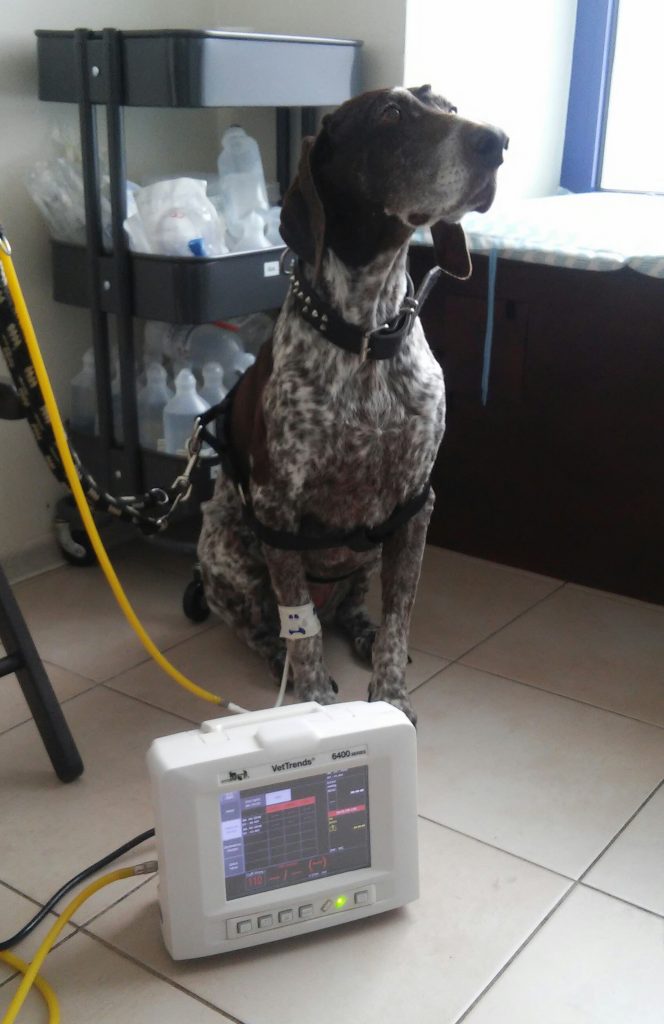Indications:
-
- • acute kidney injury or chronic kidney disease
-
- • cardiovascular diseases
-
- • neurological signs
-
- • ophthalmological signs, eg. sudden loss of vision
-
- • hyperadrenocorticism
-
- • hyperthyroidism
-
- • pheochromocytoma
-
- • administration of drugs that cause the increase in blood pressure (eg. steroids, propalin)
-
- • monitoring during surgery and dentistry procedures
- • monitoring in emergencies

Methods of blood pressure measurement used in out clinic:
1. Oscillometric method – technique of measurement that detects arterial wall vibrations. Adequate size of cuff on the limb or tail is filled with air and emptied according to our device settings. Obtained results show systolic blood pressure, diastolic blood pressure, mean blood pressure and heart rate values.
2. Doppler method – based on detection of blood cells movement in the vessel. The cuff on the limb or tail is applied and piezoelectric crystal is located on the superficial artery distally to the cuff. Cuff should be pumped with air manually till the blood flow is no longer audible. Then it is slowly emptied. The pressure at which the audible flow signal returns is considered systolic blood pressure. It is the only measurement we can take using Doppler method.
Risk associated with hypertension:
– kidney injury, presence of proteinuria
– retinal injury (vascular injuries -> haemorrhage -> oedema, intraoccular hypertension -> retinal detachment -> loss of vision)
– neurological injury (stroke -> seizures, changes in mentation, various neurological deficits, sometimes sudden death)
– heart diseases leading to heart insufficiency
Treatment of hypertension (always in agreement with veterinarian’s recommendations)
– lowering diet sodium concentration
– in case of proteinuria lowering diet protein concentration
– omega-3 acids supplementation
– adequate anti-hypertensive drugs
– optional stop of drugs that cause hypertension




